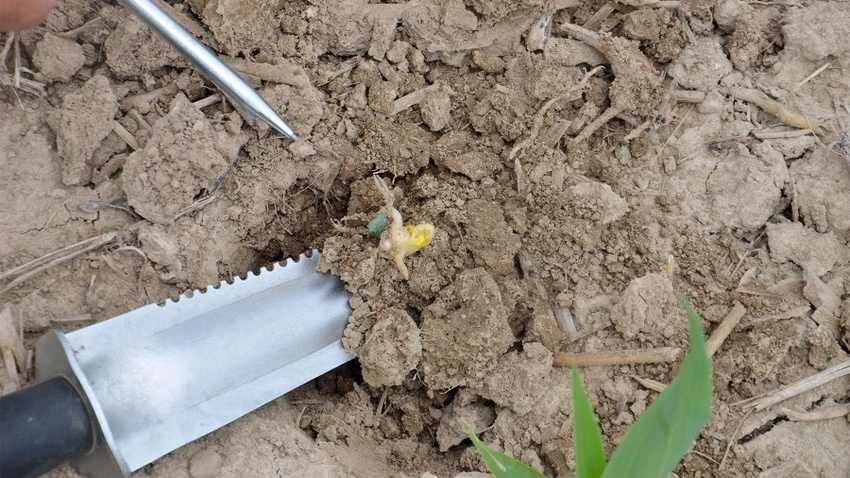Investigate spotty stands of corn

Our stand is good except in a half-dozen patches from 1 to 10 acres in size. Plants are missing, or some are there but dying. How do we diagnose the cause? Assuming it is June 5, what are our options now? What about for next year?
The Indiana certified crops adviser panel answering this question includes Danny Greene, Greene Crop Consulting, Franklin; Abby Horlacher, Nickle Plate Consulting, Frankfort; Brian Mitchem, Farmer 1st Agronomy Consulting Services, Decatur; and Dan Quinn, Purdue Extension corn specialist.
Greene: Contact your crop adviser; then grab your shovel. Dig and examine roots and lower stems. Check for potential insect feeding, plus evidence of disease or herbicide injury. Send samples to the Purdue Plant and Pest Diagnostic Lab for confirmation. Consider taking soil samples for nematode type and count. Get drone images to show patterns where damage is occurring. Compare them to soil types, equipment passes and drainage.
Options will be limited by June 5, but depending on severity, consider tearing up and replanting patches back to corn. Have your crop insurance agent file a replant claim before replanting.
Horlacher: Can you go in and replant those areas? The patches are big enough to justify it. The concern will be weed management. Replanting would help with weed pressure. Also, go in and start digging up live plants and dying plants, and check missing areas to investigate seed condition. This will help piece together what happened. Are rootworms feeding on live plants? Did water stand there? Is a wilt causing plants to die off? Is it seed rot? If there does not appear to be any pest or water issue causing the die-off, immediately go in and replant.
Take tissue and soil samples to see if there is some type of nutrient imbalance. For next year, get a drone image now to compare to the crop next year to make sure whatever caused the issue does not repeat itself.
Mitchem: Based off this limited information, with missing and dying plants, this appears to be a case of seedling blight. This is a very common problem where I work. Digging seedlings down the row in damaged areas can confirm it. Look at the tissue between the seed and the bump at the start of the crown roots, about three-quarters inch below the soil surface. If that tissue is brown and decayed, then seedling blight is the likely culprit. Heavy moisture and cool temperatures allow for growth of seedling disease organisms to flourish, overwhelm the seed treatment and damage plants.
At June 5, there is ample time for replanting corn where needed. Adjust maturity date to match the maturity of the original planting as much as possible.
Quinn: The first step would be collecting some plants. Either send them or drop them off at a diagnostic lab like the Purdue Plant and Pest Diagnostic Lab.
The lab should help you get an exact confirmation of what is occurring with those plants. It sounds like seedling disease, but without proper diagnosis, it is hard to build recommendations on what can be done. If seedling diseases are the culprit, proper seed treatment and hybrid selection will be good first steps for addressing the issue.

